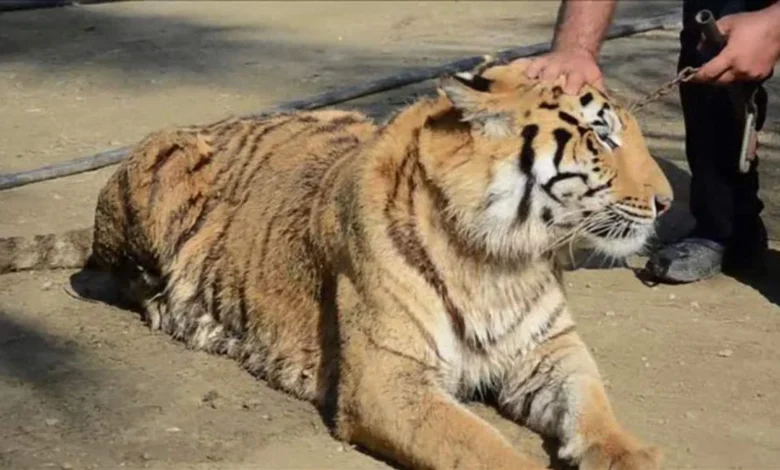Tiger Escaped Mexico Zoo: The Weeklong Search, Public Panic, and Safe Capture

1. A Dramatic Escape from Quinta La Fauna Zoo in Reynosa
Tiger Escaped Mexico Zoo: On September 3, 2024, a Bengal tiger escaped from its enclosure at Quinta La Fauna Zoo in Reynosa, a border city in northern Mexico. The zoo staff discovered the mesh cage destroyed and the animal missing, triggering an immediate alert to local authorities.
News of the escape spread rapidly, prompting warnings across South Texas—especially in the Rio Grande Valley—about the possibility that the tiger could swim across the Rio Grande into the United States.
2. Coordinated Search Efforts: Tracking the Tiger
Mexican authorities—led by Reynosa’s Department of Environmental Affairs and Civil Protection—launched an intense search campaign, deploying tracking teams who monitored the tiger’s prints and droppings in the surrounding areas. Reports of the tiger attacking livestock heightened concerns among local residents.
Meanwhile, authorities in Texas remained vigilant. The Hidalgo County Sheriff’s Office, though not actively involved in the search, warned deputies and the public to stay alert and reported any sightings.
3. The Tense Standoff and Safe Recapture
Nearly a week after the escape, a breakthrough came on September 10, 2024, when the tiger was safely captured in the Los Longoria neighborhood, located just south of McAllen, Texas. Traps had been set in areas where the animal’s presence was confirmed.
Despite its ability to swim long distances, including across the Rio Grande, officials confirmed the tiger never crossed into the U.S.
4. Health Check and Transfer to Safety
After the capture, veterinarians assessed the tiger and found it in good health, with only minor superficial injuries likely caused by navigating through brush.
The tiger was then transported to Zoológico Tamatán in Ciudad Victoria, Tamaulipas, where specialized staff and proper facilities were available to ensure its well-being. A final decision regarding its permanent placement—whether at a sanctuary or zoo—was deferred to the environmental protection agency.
5. Lessons Learned: Zoo Protocols and Emergency Preparedness
The dangerous incident underscores the importance of robust zoo emergency response protocols, which are designed to prioritize:
-
Public and staff safety
-
Animal welfare
-
Secure recapture
These protocols typically involve on-site staff trained in animal restraint, evacuation procedures, and coordination with local law enforcement—as outlined in standard zoo safety frameworks.
As a result of the escape, it’s expected that zoo management will re-evaluate enclosure security, emergency drills, and public communication strategies to prevent future incidents.
6. Community Reaction and Cross-Border Impact
The escaped tiger triggered widespread social media coverage, with viral posts and reports from locals in both Mexico and Texas about possible sightings—even in taquerías—fanning fear and curiosity.
Residents expressed relief when the tiger was captured safely. The incident also highlighted the unique challenges of managing wild animal escapes in border regions, where wildlife can traverse national boundaries easily. Trusted reporting from outlets like Texas Public Radio emphasized the controlled and professional response by authorities.
Conclusion
The daring escape of a Bengal tiger from Quinta La Fauna Zoo in Reynosa sparked intense binational concern, detailed tracking efforts, and a dramatic yet safe resolution. Thanks to coordinated action—spanning zoo officials, Mexican authorities, and Texas deputies—the animal was accounted for and relocated without harm to humans or itself.
This event serves as a stark reminder of the dangers posed by exotic animal escapes, the importance of rigorous zoo protocols, and the value of cross-border collaboration in wildlife management. For residents, it was a moment of anxiety turned swift relief—and for zoos, a critical lesson in vigilance and preparedness.




